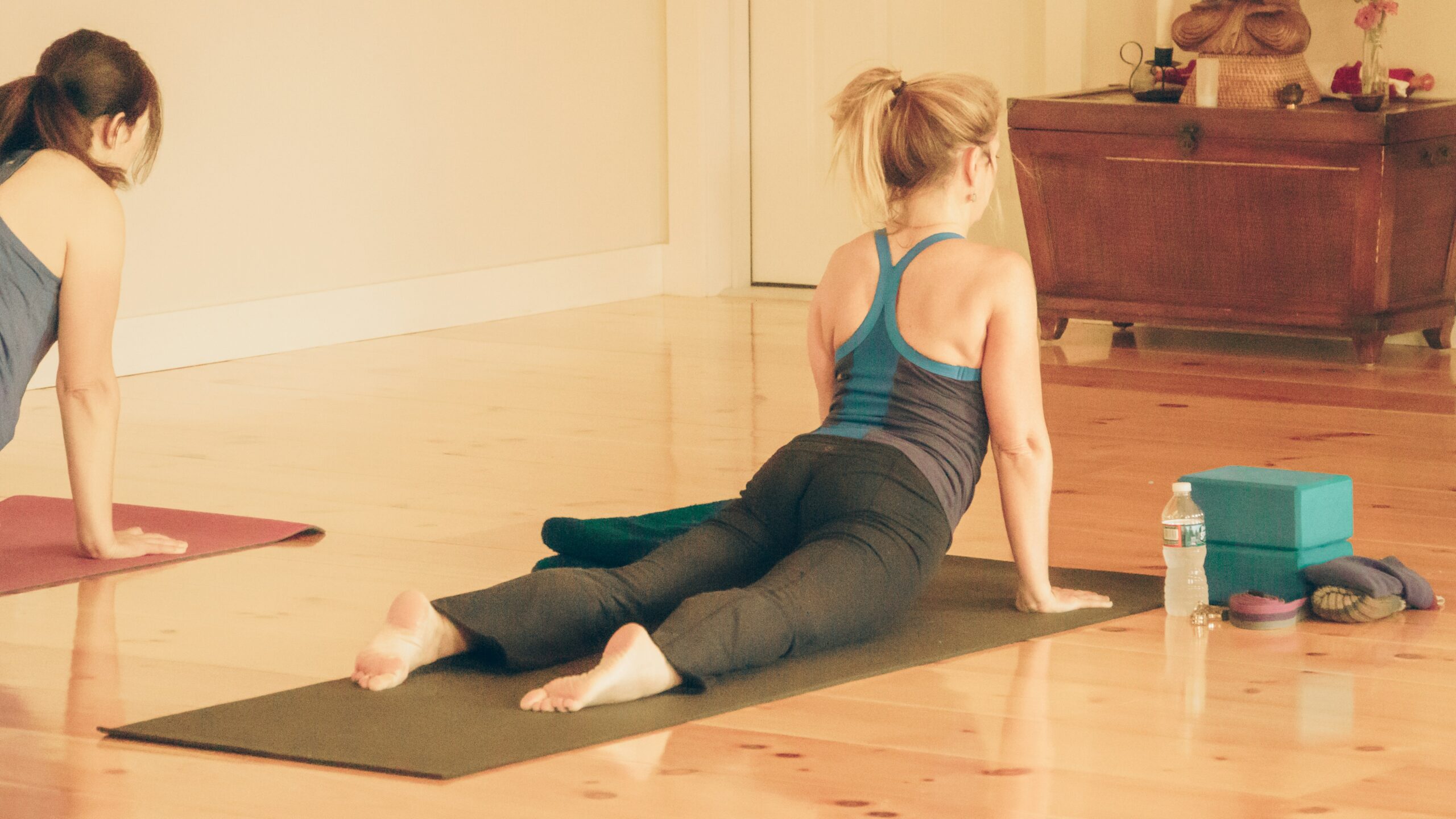Stretching safely during pregnancy: Moves to ease tension and pain
Pregnancy brings joy, but also physical challenges. As your body changes to accommodate your growing baby, you may experience discomfort in your back, hips, and shoulders. Gentle stretching can provide significant relief while supporting your changing body.
According to the American College of Obstetricians and Gynecologists (ACOG), moderate physical activity during pregnancy poses minimal risks for women with uncomplicated pregnancies and can offer numerous benefits for both mother and baby. In fact, research shows that pregnant women tend to adhere better to stretching exercise regimens compared to other forms of exercise during the second and third trimesters.
Benefits of prenatal stretching
Stretching during pregnancy provides several important benefits. Regular stretching helps relieve muscle tension and pain, particularly in the back, hips, and shoulders—areas commonly affected by your changing center of gravity. As your baby grows, your posture naturally shifts, but targeted stretches can help improve alignment and reduce strain on your muscles and joints.
Beyond pain relief, prenatal stretching enhances circulation throughout your body, which may reduce swelling in your hands and feet—a common pregnancy complaint. The mindful breathing that accompanies stretching promotes relaxation and reduces stress, creating a peaceful moment in your busy day.
Moreover, regular prenatal stretching may help manage common pregnancy symptoms like nausea or bloating through its positive effects on the autonomic nervous system, which controls many bodily functions and reflexes, according to a study published in the PMC.
Safety guidelines before you begin
Before starting any exercise routine during pregnancy, keep these essential safety guidelines in mind:
First and foremost, consult your healthcare provider, especially if you have any complications or health concerns. Every pregnancy is different, and your doctor can provide personalized guidance based on your specific situation.

Stay well-hydrated before, during, and after stretching. Proper hydration supports your increased blood volume and helps maintain amniotic fluid levels. Avoid overheating by exercising in a cool, comfortable environment, as excessive heat can be dangerous during pregnancy.
Always listen to your body—pregnancy is not the time to push through pain or discomfort. From the second trimester onward, avoid lying flat on your back for extended periods, as this position can compress major blood vessels.
The ACOG recommends stopping exercise immediately if you experience any warning signs such as vaginal bleeding, abdominal pain, regular painful contractions, amniotic fluid leakage, dizziness, headache, chest pain, or muscle weakness affecting balance.
Safe stretches for pregnancy
For back pain relief
Cat-Cow Stretch
This gentle movement helps release tension in your spine while creating space for your growing belly. Start on your hands and knees in a tabletop position with wrists under shoulders and knees under hips. As you inhale, gently arch your back and look up (cow pose), allowing your belly to sink toward the floor. When you exhale, round your back and tuck your chin to chest (cat pose), creating space between your shoulder blades. Flow gently between these positions for 5-10 breaths, moving with your natural breath rhythm.
Seated Forward Bend (Modified)
This adaptation provides a gentle stretch for your lower back without compressing your abdomen. Sit on the edge of a chair with feet flat on the floor, hip-width apart. Slowly hinge forward from your hips, keeping your back straight rather than rounded. Only go as far as feels comfortable, allowing plenty of room for your belly. Hold for 30 seconds while breathing deeply, feeling the gentle release across your lower back.
For hip tension
Seated Figure Four Stretch
This modified stretch targets the piriformis muscle and outer hip without requiring balance or floor positions. Sit on a sturdy chair with both feet flat on the floor. Cross your right ankle over your left knee, creating a figure-four shape. Keep your back straight and gently press down on your right knee for a deeper stretch. Hold for 30 seconds while breathing normally, then switch sides.
Standing Hip Circles
This movement increases hip mobility and eases tension in the joint. Stand with feet hip-width apart, holding onto a stable surface like a counter or chair back. Lift one knee up to hip height and make slow, gentle circles with your knee 5-10 times. Reverse direction, then switch legs. Keep your movements controlled and comfortable.
For shoulder and upper body relief
Shoulder Rolls
This simple movement relieves upper body tension caused by changing posture and breast weight. Sitting or standing with feet hip-width apart, bring your shoulders up toward your ears, then roll them back and down in a circular motion. Repeat 10 times, then reverse direction. Focus on creating smooth, fluid movements rather than jerky rotations.
Chest Opener
This stretch counteracts the forward-hunched position many pregnant women adopt as their center of gravity shifts. Stand in a doorway with your forearms resting on either side of the frame at shoulder height. Gently lean forward until you feel a comfortable stretch across your chest and front shoulders. Hold for 20-30 seconds while breathing deeply, then release.
Creating a regular stretching routine
For optimal benefits, aim to incorporate stretching into your daily routine. Even 10-15 minutes can make a significant difference in how you feel. The ACOG guidance suggests that exercise sessions of 35-90 minutes, performed 3-4 times weekly, are safe for women with uncomplicated pregnancies.
If you’re new to exercise, start slowly with just a few minutes daily and gradually increase duration as you feel comfortable. Many women find that morning stretches help reduce stiffness, while evening routines promote better sleep. Women who exercised regularly before pregnancy can typically continue with more intensive programs, but should always prioritize safety and comfort as their bodies change.
Consider creating a dedicated space for your stretching practice with supportive props like pillows or a yoga mat. This physical reminder can help you maintain consistency, even on busy days.
When to modify or avoid stretching
As your pregnancy progresses, you’ll need to modify certain stretches to accommodate your changing body. After the first trimester, avoid lying flat on your back for extended periods, as this position can compress the vena cava, reducing blood flow to your heart and baby.
As your center of gravity shifts, reduce the intensity of stretches that challenge your balance, or use props like chairs, walls, or cushions for support. Be mindful of your growing belly and give it space during forward bends and twists. Avoid deep twisting motions that compress your abdomen, opting instead for open twists that rotate your upper body while keeping your hips stable.
Your body also produces relaxin during pregnancy, a hormone that increases joint flexibility. While this helps prepare for childbirth, it can make it easier to overstretch, so move gently into each position without pushing to your maximum range.
Complementary wellness practices
To enhance the benefits of your stretching routine, consider integrating complementary practices that support overall prenatal wellness. Prenatal yoga combines gentle stretches with mindful breathing and often includes modifications specifically designed for each trimester. Many yoga studios offer classes exclusively for pregnant women, providing community support along with physical benefits.
Gentle walking provides cardiovascular benefits without excessive strain on your joints, while swimming offers full-body movement with buoyancy to relieve pressure from your growing belly. The water’s resistance provides a gentle workout while its support reduces stress on joints and ligaments.
Deep breathing naturally combines with stretching to promote relaxation and increase oxygen flow to you and your baby. Practice diaphragmatic breathing by inhaling slowly through your nose, allowing your belly to expand, then exhaling completely through your mouth.
For a more comprehensive approach to prenatal wellness, check out our specialized Pregnancy Course at Beginning Academy, which includes guided stretches, relaxation techniques, and expert advice for each trimester.
When to seek help
While mild discomfort during pregnancy is normal, certain symptoms warrant professional attention. Contact your healthcare provider if you experience severe or persistent pain that doesn’t improve with rest or stretching, sharp pain in any joint (especially pelvis or back), numbness or tingling in extremities, or pain accompanied by fever, bleeding, or unusual discharge.
Remember that your body is undergoing remarkable changes during pregnancy. By incorporating safe, gentle stretches into your daily routine, you can ease discomfort while supporting your body through this transformative journey. Always prioritize your safety and comfort, and don’t hesitate to consult with your healthcare provider about your specific needs.
The journey through pregnancy is unique for every woman. With the right stretching routine and proper precautions, you can nurture your changing body with confidence and comfort.

